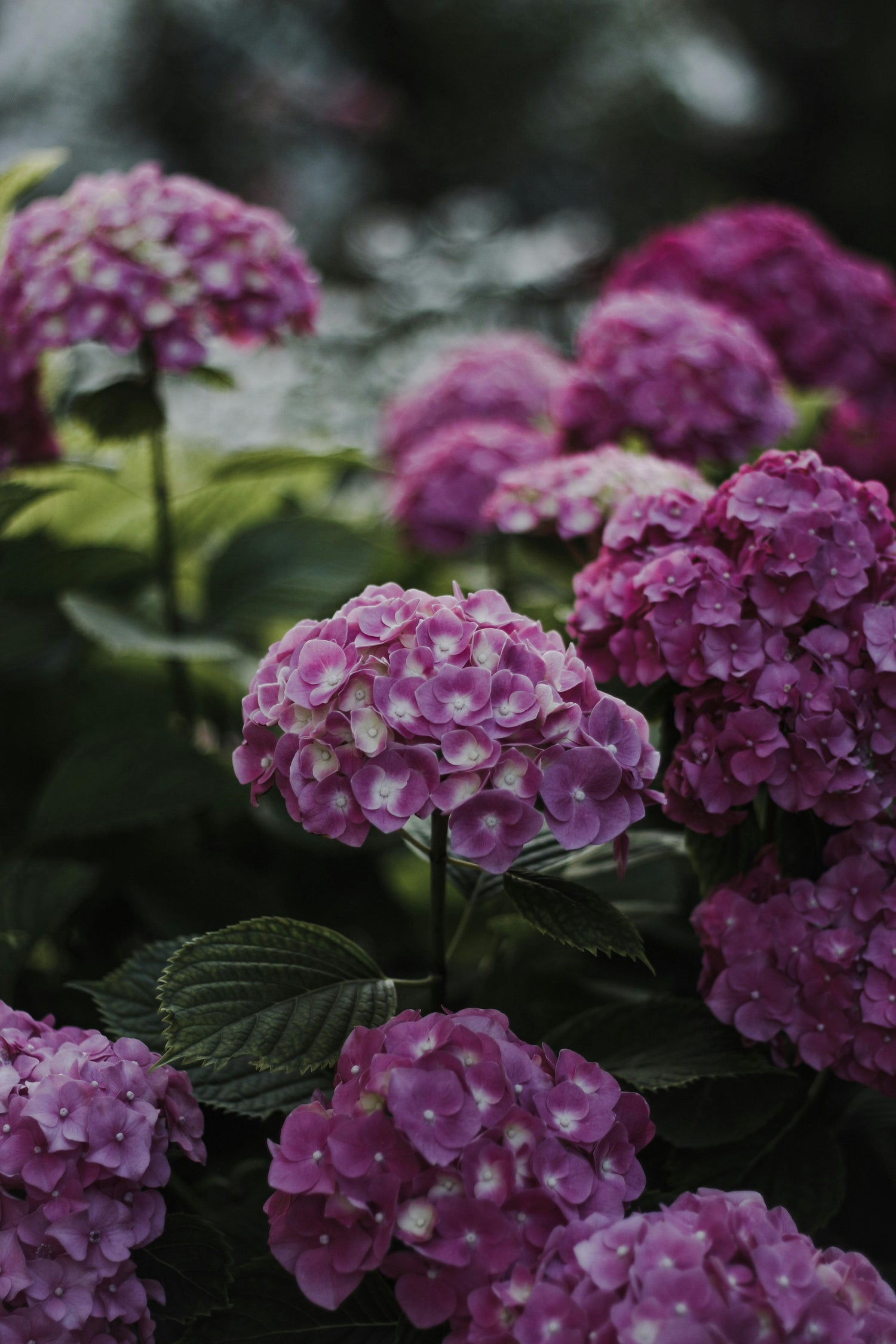Hydrangea "Schneeball" 0.40 - 0.60 m / Hydrangea macr. "Snowball"/
- Regular price
-
157,00 lei - Regular price
-
- Sale price
-
157,00 lei
Couldn't load pickup availability
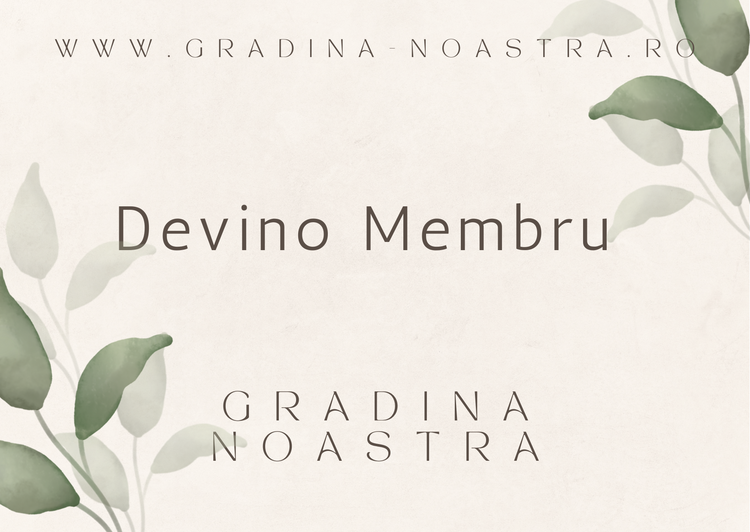
10% reducere* pentru MEMBRI GRADINA NOASTRA la doar 299 RON/an
Oferte exclusive, lichidari de stoc si altele.
*Reducerea se aplica incepand cu prima achizitie. Afla detalii »
La achizitii totale de minimum 15.000 RON, iti oferim un discount permanent de 15% pentru toate produsele tale preferate. Daca valoarea depaseste 20.000 RON, reducerea creste la 20%
There are two types of hydrangea: with round, sterile flowers, called "Macrophylla" and with flat, small and fertile flowers surrounded by other larger and sterile flowers, called "Serrata". The plant appears in natural conditions in the form of a bushy shrub with numerous stems resulting from shoots grown on a superficial root. It is found in approximately 190 varieties, some of which are also climbing - they grow on the walls of houses like ivy and attach themselves to bricks. The color of the hydrangea depends on the acidity of the soil in which it was planted. Thus, in an acid soil, the flowers of the Hydrangea will have a shade of blue and in an alkaline one, different shades of pink or red. For blue flowers, the PH must be around 4-4.5, and for pink and red ones, the PH must be between 5 and 5.6. To increase the acidity of the soil, especially if you want For hydrangea to have blue or purple flowers, you can use one of the following solutions: aluminum sulfate (7 g in 3.7 l of water) or a solution of water with vinegar (5 l: 200 ml). You can also mix the soil with pieces of tree bark, sawdust, eggshells, fruit peels, ground coffee, grated orange and grapefruit peels. If you want the Hydrangea to have shades of pink, use a less acidic fertilizer . You can sprinkle around the plant a little limestone or lime or some brick scraps. Be careful, however, that the soil does not become too alkaline. The hydrangea must be planted in a good quality soil. The planting site must be positioned so that the Hydrangea benefits from the sun's rays in the morning but not in the afternoon. It is best to plant it in areas with partial shade or near a fence facing north, northwest or west. It is a water-loving plant, its name comes from the Greek "hydra", which means water, so the plant must be watered as often as possible, especially on summer days. But be careful, too much water will lead to the blackening of the edges of the leaves. Hydrangea is rarely fertilized because too much nitrogen will lead to the cessation of flowering. Applications are made at the root, at the beginning of the season. Resistance up to -15 degrees C, but it is advisable to protect it from frost, covering it with straw, leaves and earth or with cardboard. Hydrangea does not always need training cuts, but this operation can be done every spring, when the new shoots appear. The cuts are made exactly above the node on the stem. If it is not cut, the Hydrangea will continue to bloom, but the flower clusters will not be as large, due to the numerous stems. Dry flowers are left on the stems over the winter to protect the young shoots below them from frost. Hydrangea propagation is done by dividing the roots or by marking. Hydrangeas planted for a longer time in the same place can be divided in early spring, just like any other perennial. In this way, several plants can be obtained from the same root ball. If you opt for marking, it is advisable to dig a hole near the plant and bend a section of the stem. With the help of a knife, remove a 2.5 cm ring from the bark of the stem, where it touches the ground and cover the cut place with soil, leaving the tip of the bent stem uncovered. In a short time, roots will begin to form in the indented place. Hydrangeas can be attacked by fungi that can appear due to excessive watering, watering at inappropriate times during the afternoon or from other sources. If you notice that your hydrangeas have black or brown spots on the leaves or, on the contrary, they are discolored, it is possible that they are attacked by a fungus. In this case, use a treatment against plant fungi, which you can buy in specialty stores. The brown spots can also appear from the sun's rays. If after it has rained there is a very strong sun, the water left on the leaves or flowers will lead to the formation of brown spots. If you notice that the leaves of the Hydrangea are gnawed or perforated, you will have to identify the pest that the plant is dealing with and choose the right insecticide . However, pay attention to the instructions on the packaging, which must be strictly followed in order not to harm the health of the plant.
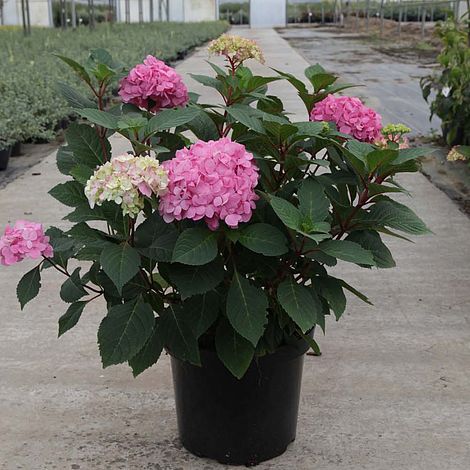
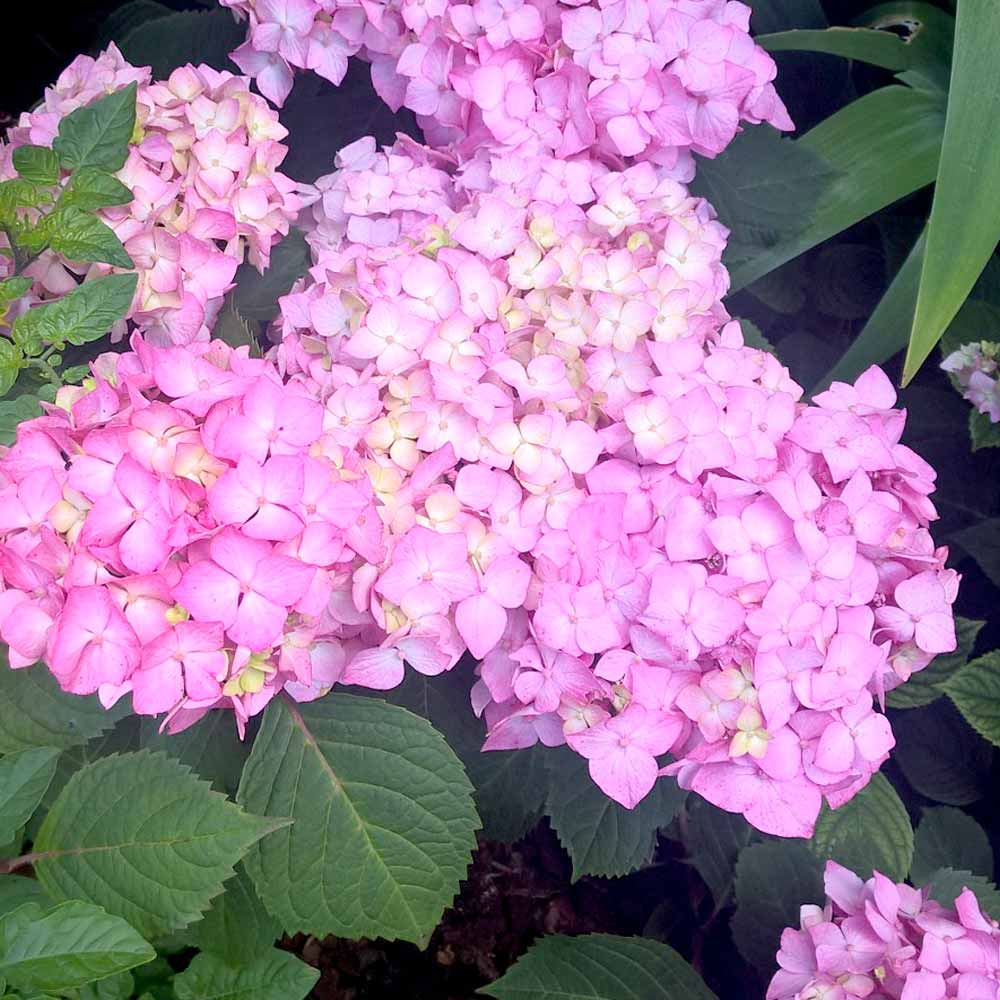
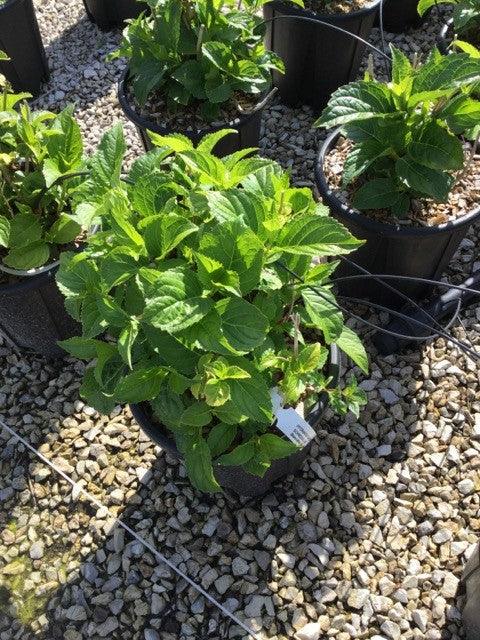
Why choose Gradina Noastra products?
Frequent questions
Tips for planting
Plantarea corectă este esențială pentru o grădină sănătoasă și frumoasă. Modul în care plantezi o plantă poate influența semnificativ dezvoltarea ei pe termen lung. Iată câteva sfaturi esențiale care te vor ajuta să plantezi corect și să asiguri condițiile optime pentru creșterea plantelor tale:
Alege locul potrivit
- Înainte de a planta, asigură-te că alegi locul corect pentru fiecare plantă în funcție de nevoile sale. Verifică cerințele plantei în ceea ce privește lumina, solul și expunerea la vânt. Unele plante preferă locuri însorite, în timp ce altele se dezvoltă mai bine la umbră parțială.
Pregătirea solului
- Solul este baza unei plante sănătoase. Începe prin a afâna solul la o adâncime de cel puțin 30 cm pentru a permite rădăcinilor să se dezvolte. Îmbunătățește calitatea solului prin adăugarea de compost sau îngrășăminte organice, în funcție de nevoile specifice ale plantelor.
Dimensiunea găurii de plantare
- Săparea unei gropi corecte este esențială. Gaura trebuie să fie de două ori mai lată decât balotul de rădăcini al plantei, dar nu mai adâncă decât înălțimea acestuia. Acest lucru va permite rădăcinilor să se răspândească ușor și să se stabilească bine.
Plasarea corectă a plantei
- Poziționează planta în gaură astfel încât partea superioară a rădăcinilor să fie la nivelul solului sau ușor deasupra acestuia. Acoperirea excesivă a rădăcinilor poate duce la sufocarea acestora și la putrezire.
Distanța între plante
- Respectă distanțele recomandate între plante, mai ales în cazul plantelor perene, arbuștilor și arborilor. Dacă sunt plantate prea aproape, plantele vor concura pentru apă, lumină și nutrienți, ceea ce poate afecta dezvoltarea lor.
Udarea după plantare
- După ce ai plantat, udă bine zona din jurul plantei pentru a elimina orice bule de aer din sol și pentru a asigura un bun contact între rădăcini și sol. Continuă să uzi regulat, mai ales în primele săptămâni, până când planta se stabilește.
Aplicarea mulciului
- După plantare, adaugă un strat de mulci în jurul plantei pentru a ajuta la reținerea umidității și la prevenirea creșterii buruienilor. Asigură-te că mulciul nu este aplicat direct pe tulpina plantei, pentru a preveni apariția bolilor fungice.
Plantarea la sezonul potrivit
- Fiecare plantă are un sezon ideal de plantare. Majoritatea plantelor perene, arbuștilor și arborilor se plantează primăvara sau toamna, când temperaturile sunt moderate și umiditatea este mai ridicată. Evită plantarea în perioadele foarte calde sau reci. Daca plantele sunt in ghivece se pot planta oricand cu exceptie cand solul este inghetat.
Îngrășămintele de bază
- Adăugarea unui îngrășământ de bază atunci când plantezi poate stimula dezvoltarea rapidă a rădăcinilor. Optează pentru un îngrășământ organic sau pentru unul specific tipului de plantă pe care îl plantezi.
Suport pentru plantele tinere
- Anumite plante tinere sau copaci au nevoie de suport în primele ani pentru a se stabili corect. Folosește țăruși sau suporturi, dar asigură-te că legăturile nu sunt prea strânse, pentru a permite creșterea naturală.
Sfaturi pentru udarea plantelor
Udarea corectă este esențială pentru sănătatea și dezvoltarea plantelor, fie că sunt în grădină sau în ghivece. O udare adecvată poate face diferența între o plantă sănătoasă și una care suferă. Iată câteva sfaturi utile pentru a te asigura că plantele tale primesc cantitatea potrivită de apă:
Udarea la momentul potrivit
- Cel mai bine este să uzi plantele dimineața devreme sau seara târziu, când temperaturile sunt mai scăzute. Astfel, apa are timp să pătrundă în sol înainte să se evapore.
Verificarea umidității solului
- Înainte de a uda, verifică umiditatea solului. Introdu degetul în sol la 2-3 cm adâncime. Dacă solul este încă umed, nu este necesară udarea. Udarea excesivă poate duce la putrezirea rădăcinilor.
Udarea în profunzime
- Este mai bine să uzi plantele mai rar, dar în profunzime, decât să le uzi superficial în mod frecvent. O udare profundă încurajează dezvoltarea unor rădăcini puternice și adânci.
Evita stropirea frunzelor
- Când uzi plantele, încearcă să aplici apa direct la baza acestora, evitând să uzi frunzele. Frunzele umede pot favoriza apariția bolilor fungice, mai ales în condiții de umiditate ridicată.
Ajustează udarea în funcție de sezon
- În timpul verii, plantele au nevoie de mai multă apă, deoarece solul se usucă mai repede din cauza temperaturilor ridicate. În timpul iernii, necesarul de apă este redus, așa că ajustează frecvența udării.
Udarea plantelor în ghiveci
- Plantele în ghivece necesită o atenție deosebită. Asigură-te că ghivecele au orificii de drenaj pentru a preveni stagnarea apei. Uda-le până când apa începe să se scurgă prin găurile de drenaj, apoi lasă ghiveciul să se scurgă complet.
Folosește mulci pentru a reține umiditatea
- Aplicarea unui strat de mulci în jurul plantelor ajută la menținerea umidității solului și reduce evaporarea apei. Mulciul poate fi făcut din paie, scoarță de copac sau frunze uscate.
Plantele noi au nevoie de mai multă atenție
- Plantele nou plantate au rădăcini mai superficiale și au nevoie de mai multă apă decât cele bine stabilite. Asigură-te că acestea sunt udate regulat în primele săptămâni după plantare.
Tips for caring for plants
Îngrijirea plantelor este esențială pentru a le menține sănătoase și viguroase pe tot parcursul anului. Indiferent dacă sunt plante de interior, de grădină sau arbuști, fiecare plantă are nevoi specifice de îngrijire. Iată câteva sfaturi generale care te vor ajuta să le oferi plantelor tale cele mai bune condiții pentru o creștere armonioasă:
Udarea corectă
- Asigură-te că plantele tale primesc suficientă apă, dar evită udarea excesivă. Majoritatea plantelor preferă un sol umed, dar bine drenat. Uda-le dimineața devreme sau seara târziu, pentru a evita evaporarea rapidă a apei.
Fertilizarea regulată
- Plantele au nevoie de nutrienți pentru a crește sănătoase și puternice. Fertilizează-le regulat, folosind un îngrășământ specific tipului de plantă. Pentru plantele de grădină, îngrășămintele organice sau compostul sunt o alegere excelentă.
Tăierea și toaletarea
- Tăierea regulată a plantelor ajută la îndepărtarea frunzelor uscate sau bolnave și stimulează o creștere nouă și sănătoasă. În plus, tăierile pot modela planta și ajută la menținerea unui aspect ordonat.
Asigură-te că primesc suficientă lumină
- Lumină este esențială pentru procesul de fotosinteză. Plantele de interior ar trebui așezate în locuri cu lumină naturală, dar evită expunerea directă la soare intens pentru cele care preferă umbra. În grădină, asigură-te că plantele sunt plasate în funcție de nevoile lor de lumină: unele preferă plin soare, altele umbră parțială.
Aerarea solului
- Pentru a preveni compactarea solului și a permite rădăcinilor să respire, este bine să afâni periodic solul din jurul plantelor. Acest lucru ajută și la o mai bună absorbție a apei și a nutrienților.
Protecția împotriva dăunătorilor
- Monitorizează plantele regulat pentru a detecta semne de dăunători, precum insecte sau boli. În caz de infestare, folosește soluții organice, cum ar fi uleiul de neem, sau insecticide specifice pentru a controla problema.
Curățarea frunzelor la plantele de interior
- Plantele de interior acumulează praf pe frunze, ceea ce le poate bloca porii și împiedica respirația corectă. Curăță frunzele cu un burete umed sau un spray cu apă pentru a menține sănătatea plantei.
Rotirea plantelor de interior
- Plantele de interior au tendința de a crește în direcția luminii. Pentru a obține o creștere uniformă, rotește ghivecele periodic pentru a expune toate părțile plantei la lumină în mod egal.
Monitorizează condițiile climatice
- În funcție de sezon și de condițiile climatice, adaptă îngrijirea plantelor. În perioadele de secetă, udă mai frecvent, iar în sezonul rece protejează plantele sensibile la frig prin acoperirea cu materiale speciale.
Susținerea plantelor cu creștere rapidă
- Anumite plante, precum vițele sau arbuștii cu creștere rapidă, au nevoie de suport pentru a se dezvolta corect. Folosește tutori sau grilaje pentru a susține aceste plante și a le direcționa creșterea.
Delivery details
Depending on the type of product ordered, the products bought from the Gradina Noastra online store can be delivered: - by own fleet - by courier or transport exchange Deliveries are made exclusively on the territory of Romania, by the delivery method available and displayed for each individual product . For logistical reasons, orders containing bulky plants are delivered by our own fleet or the transport exchange. Products reduced in size and volume are delivered by courier.
Delivery costs are calculated automatically in the shopping cart, after entering the delivery address. For products delivered by our own fleet, the costs vary depending on the distance from the Gradina Noastra store to the delivery address, as well as the total value of the goods ordered or the weight and volume of the products. For products delivered by courier, the delivery fee is determined according to the weight of the order.
Products can be delivered within 1-3 working days (for Bucharest and Ilfov) and 1-5 working days (for the rest of the country) from the order confirmation date, for products marked "In stock".
- Transport cost Corbeanca, Otopeni, Balotesti 50 lei (VAT included);*
- Transport cost Bucharest and Ilfov 100 lei (VAT included);*
- Transport cost Bragadiru, Magurele, Jilava, Commune Berceni and Popesti-Leordeni 150 lei (VAT included);
- Transport cost to other counties in the country 2.5 lei/km+VAT (own fleet or transport exchange).
Delivery terms may undergo unforeseen changes during the state of emergency or state of alert established as a result of the COVID-19 pandemic.
While we aim to ship your order as soon as possible, no delivery time is guaranteed. Due to various often unforeseen circumstances that may affect delivery, including but not limited to: floods, blocked roads, traffic jams, no delivery time is guaranteed.
* For orders that exceed the amount of 5000 lei (VAT included), no shipping cost is charged.
Customer support
Customer service
We are happy to answer your questions! Do not hesitate to contact us using the contact form, by phone or our chat service. Our operating hours are from 8:30 a.m. to 6:00 p.m. Monday through Friday, except for public holidays.











